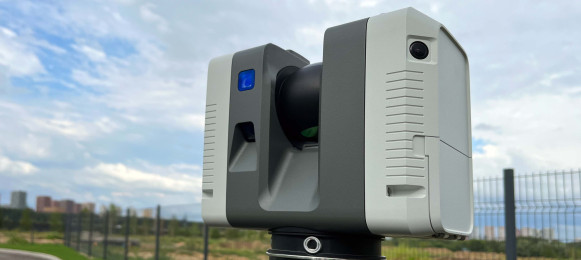There is a technology capable of capturing every part of a construction site in stunning detail, creating a digital replica that empowers better planning, fewer errors and smoother project execution. That's the magic of laser scanning – and for companies like ours, it is an essential tool that continues to revolutionise construction, writes Ryan Donoghue head of digital engineering at AJ Digital.
Laser scanning offers a wide range of benefits that are fundamentally changing construction workflows while helping to deliver unmatched accuracy. Traditional surveying methods, while valuable, can be susceptible to human error and laser scanning eliminates this risk, capturing highly accurate 3D data for an entire site. This translates to fewer errors during construction, minimising costly rework and project delays.
Laser scanning further allows for the creation of Building Information Modelling (BIM) – a virtual representation of the entire project. BIM in turn facilitates clash detection, where potential conflicts between different building components can be identified and addressed before construction begins. This promotes better coordination between architects, engineers and contractors, leading to a smoother, more efficient construction process.
Even before construction commences, laser scanning can be used to compare the design plans with the actual site conditions. This helps identify any discrepancies between the design and reality, allowing for adjustments to be made before construction starts. This proactive approach prevents costly delays and rework later in the project.
As construction progresses, laser scanning can then be used to capture the "as-built" condition of the building. This creates a detailed and accurate record of the final structure, which is invaluable for facility management, maintenance planning and future renovations.
Laser scanning expertise
However, while laser scanning is an incredible construction tool, it is the expertise behind it, which makes the difference. At AJ Digital, our team of experienced technicians uses state-of-the-art laser scanners to capture high-quality data of every construction site. We then process this data to create a detailed and usable point cloud for further analysis.
A point cloud, in the context of laser scanning, is a digital representation of a physical object or space created by capturing millions of data points using a laser scanner. For simplicity, imagine a 3D point cloud like a giant swarm of digital bees, each bee representing a single measurement of a specific location in space.
A point cloud is particularly effective for data acquisition. A laser scanner emits pulses of laser light and measures the time it takes for the light to bounce back from the object being scanned. This data, along with the scanner's position and orientation, is used to calculate the precise location of each point on an object's surface. Modern laser scanners can capture millions of data points per second, resulting in a highly detailed and accurate representation of the scanned object or space.
While most commonly used for capturing surfaces, some laser scanners can also record colour information (RGB values) for each point, creating a realistic coloured point cloud. Once captured, the raw data then needs to be processed by specialised software to create a usable point cloud. This software cleans, filters and organises the data points to create a coherent 3D representation.
What can you do with a point cloud?
Point clouds are incredibly versatile and have a wide range of applications, especially in construction. They can be used to create highly accurate 3D models of buildings, the sites and the infrastructure.
Since a point cloud captures the precise location of each point, it can also be used to calculate volumes of spaces or objects. This is useful for tasks such as estimating material quantities for construction projects. Furthermore, by comparing point clouds taken at different stages of construction, project managers can track progress and identify any deviations from the plan. As point clouds create a valuable record of a building's final state, they can also be used for facility management, maintenance planning and future renovations.
However, while the benefits of laser scanning are undeniable, some may have questions about its use. Laser scanning is not simply an added expense - it's an investment that generates significant returns. Consider the cost of traditional surveying methods that can lead to errors and rework. Laser scanning's upfront cost pales in comparison to the potential savings it offers.
Laser scanning actually started back in the 1960s, but it was not until the 1980s that the technology matured enough for real-world use. Early models were bulky, slow and expensive, limiting their practicality. Fast forward to today, and advancements in computing power, laser technology and data processing have transformed laser scanning into a highly efficient and accessible tool – and there is more to come.
The future of laser scanning is brimming with exciting possibilities such as increased automation, which will allow for faster data capture and processing, further enhancing efficiency. In time, we expect to see laser scanners continuously monitoring construction progress, enabling real-time adjustments and improved quality control. AI integration could also unlock the power of laser scanning data for tasks like automated progress reporting and clash detection, further streamlining construction workflows.
The future of construction
So, we can see that laser scanning is no longer a futuristic concept - it's a powerful tool shaping the present and future of construction. By embracing laser scanning, construction companies can achieve greater accuracy, improve efficiency, reduce costs and ultimately deliver higher quality projects.
At AJ Digital, we are at the forefront of the laser scanning revolution. We continuously invest in the latest technologies and stay updated on industry trends to provide our clients with the most advanced solutions.
We understand that every project is unique and offer flexible laser scanning packages tailored to each specific need and budget - to ensure that our clients always get the most value out of this powerful technology.



